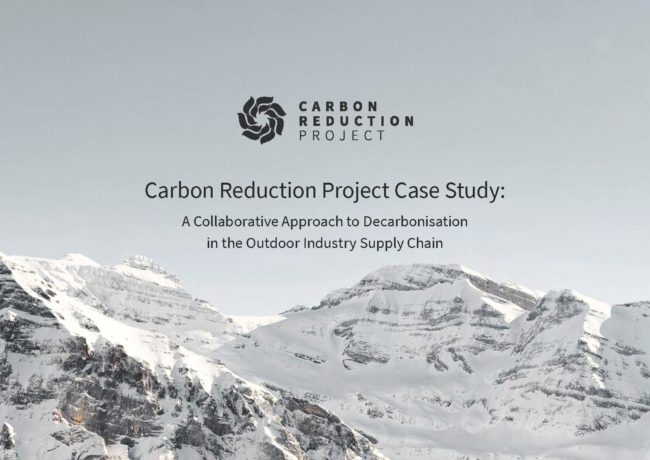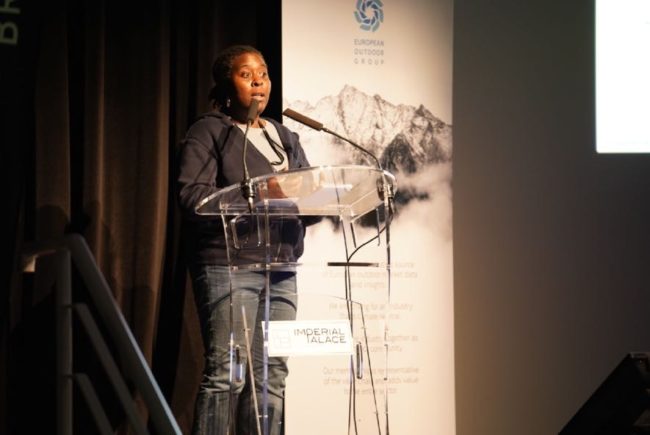The European Outdoor Group (EOG) has published an update from its long-term Carbon Reduction Project. Working with the Apparel Impact Institute (Aii) and 10 EOG members, the project team completed an audit of 16 manufacturing facilities and established that their combined CO2 emissions totalled almost half a billion kilogrammes in 2021. The audit also explored the root causes for the existing situation and identified opportunities to actively mitigate those factors and make significant reductions in the levels of emissions.

Conceived in 2019, the EOG Carbon Reduction Project is a collaborative outdoor industry programme that is aligned to the climate science recommendations that were set out in the Paris Agreement, namely, to measure emissions, identify hotspots, develop a plan, and take action. In 2020, an initial pilot group of EOG member brands was convened, and together they developed and defined the project methodology. The EOG extended an invitation to participate and more brands joined the project, working collaboratively and transparently. Being a neutral organisation, the EOG was able gather and analyse confidential data that businesses would not traditionally or willingly share with each other.

The project is following a five-stage process and the partners in the pilot phase worked through these together:
- Supplier mapping (carried out internally by the EOG)
- Creation of a supplier roadmap through a pre-screening process which identified facilities with the greatest potential
- Supplier carbon target setting under the umbrella of the Aii’s Carbon Leadership Program, and working closely with RESET Carbon which undertook the facility liaison, assessment and training role
- Supplier implementation with the brands continuing to work collaboratively, supported by the EOG and other relevant stakeholders, to take the mitigation actions set out in their action plans
- Supplier reporting, a long-term process wherein brands monitor and track facility progress towards their targets.
Through the pilot group phase, the Carbon Reduction Project established that there is a lot of commonality in the facilities used by the brands involved. Of the 345 used in total, 44 were shared and one was used by all of the brands. As expected, the greatest source of emissions was coal at 45.7%, followed by purchased electricity (non-renewable) at 27.3%.

EOG sustainability project manager Dr Verity Hardy is leading the Carbon Reduction Project (fot. EOG)
Participating brands were not obliged to disclose their internal targets, but gave an indication anyway. All of the brands, including those not officially signed up to the Science Based Targets initiative (SBTi), have ambitious emission reduction targets that align with climate science. Even though the baseline year sum of emissions for each facility varies, half of the facilities have absolute reduction targets that range from 50%-60%, in line with SBTi requirements for the ‘target year’ of 2030.
In this context, and that of the other work completed during the pilot phase, the Carbon Reduction Project now has a clearer understanding of the scale of the challenge ahead, but also the actions that can be implemented to make significant and long-term impacts on emissions. The brands already involved will continue to work collaboratively, supported by the EOG and other relevant stakeholders. They will monitor and track facility progress towards their targets and report back to the wider group.
Leonie Lennartz of Carbon Reduction Project partner Vaude comments: “Collaboration is key to reduce greenhouse gas emissions and to increase renewable energy usage within our supply chains. We are excited to be part of this ambitious and urgent climate action.”
Bryant LaPres, senior director of industry engagement at the Apparel Impact Institute, adds: “Through our work with the EOG on the Carbon Reduction Project, we achieved true collective action. The EOG played a critical role in bringing this work from concept to action. The association’s member brands played an equally critical role with a strong focus on partnership, by nominating shared suppliers rather than going alone. We are excited to move into implementation activities to achieve direct emissions reductions and look forward to starting another round of this project.”
According to a recent Aii and Fashion for Good report, significant resource is required for the fashion, and therefore by association, the outdoor industry, to meet necessary climate targets and be net-zero by 2050. Individually, organisations will not have sufficient funds to make a meaningful impact, so the EOG is setting up the Impact Accelerator Fund, a collaborative fund that is dedicated to supporting decarbonisation projects and climate mitigation actions within supply chains related to the outdoor industry. It will be open to any interested party to contribute to, including brands, retailers, and other associated stakeholders, and all of those paying in will get a vote on how the funds are distributed.
Dr. Verity Hardy, sustainability project manager at the EOG, comments: “The Carbon Reduction Project pilot group has clearly demonstrated the value of collaboration, both in terms of the data and insights provided collectively, and economies of scale. We know that we have a huge piece of work to do to reduce carbon emissions from manufacturing facilities, but project partners also now have a clear and realistic plan of action. Sustaining and scaling up this level of cooperation will be essential for achieving net-zero and I urge companies to come forward and work with us on this absolutely vital project for the whole industry.”
Andreas Wolf of project partner ORTOVOX comments: “For us at ORTOVOX, the Carbon Reduction Project allowed us to better understand the dimensions of carbon reduction. Now we have a better understanding of our required actions to tackle carbon emissions in our deeper supply chain.”
Markus Wieser of project partner WL Gore adds: “The programme has demonstrated that collective action on a regional level will be needed to reduce carbon emissions through coal phase out and a switch to renewables. This is not easy to tackle on an individual brand or individual supplier level.”
To read the full Carbon Reduction Project case study, download it from the EOG website HERE.
Organisations that are interested in getting involved in the project should contact Dr. Verity Hardy on verity.hardy@europeanoutdoorgroup.com. For more information about the EOG, visit www.europeanoutdoorgroup.com.

KOMENTARZE